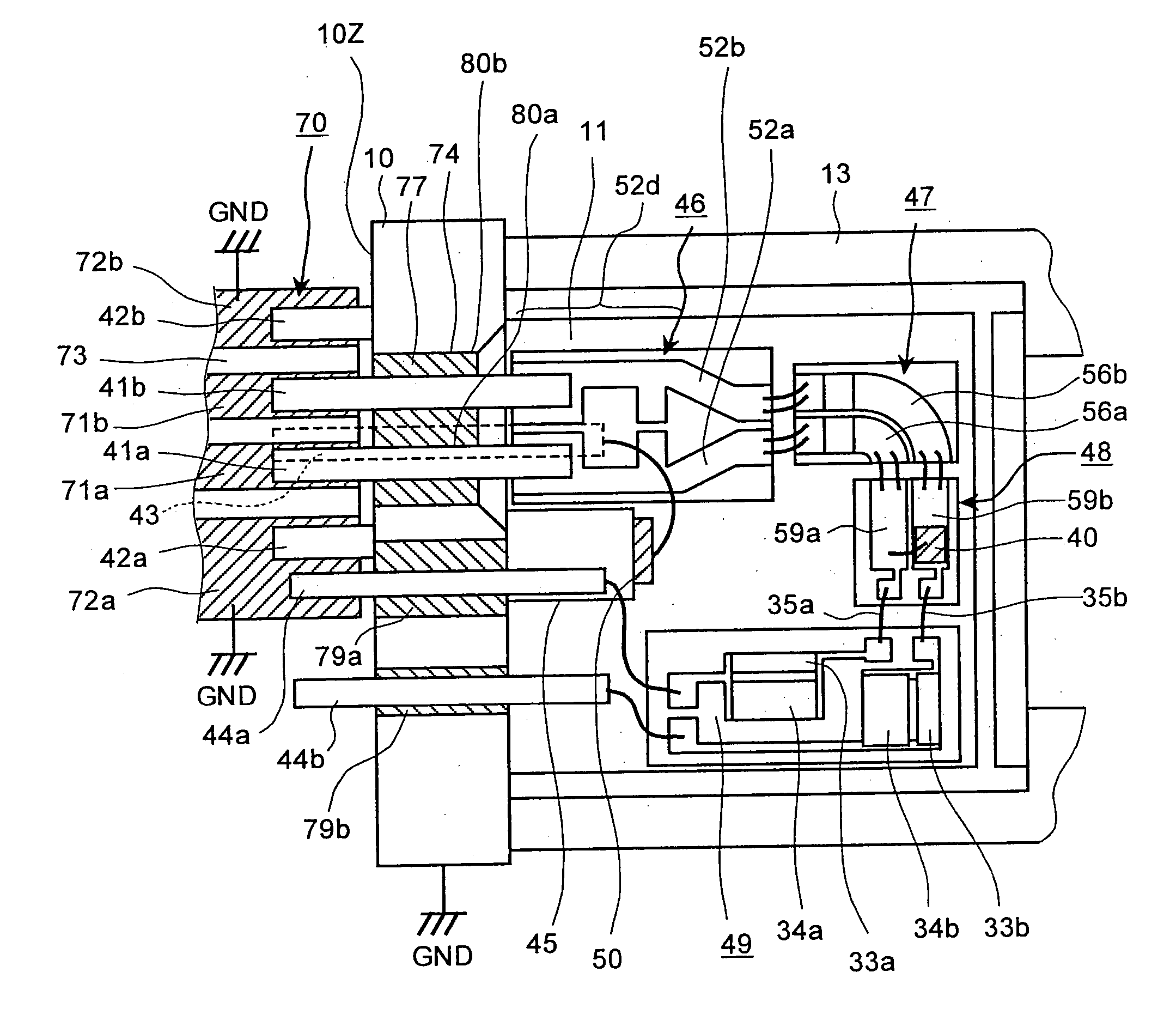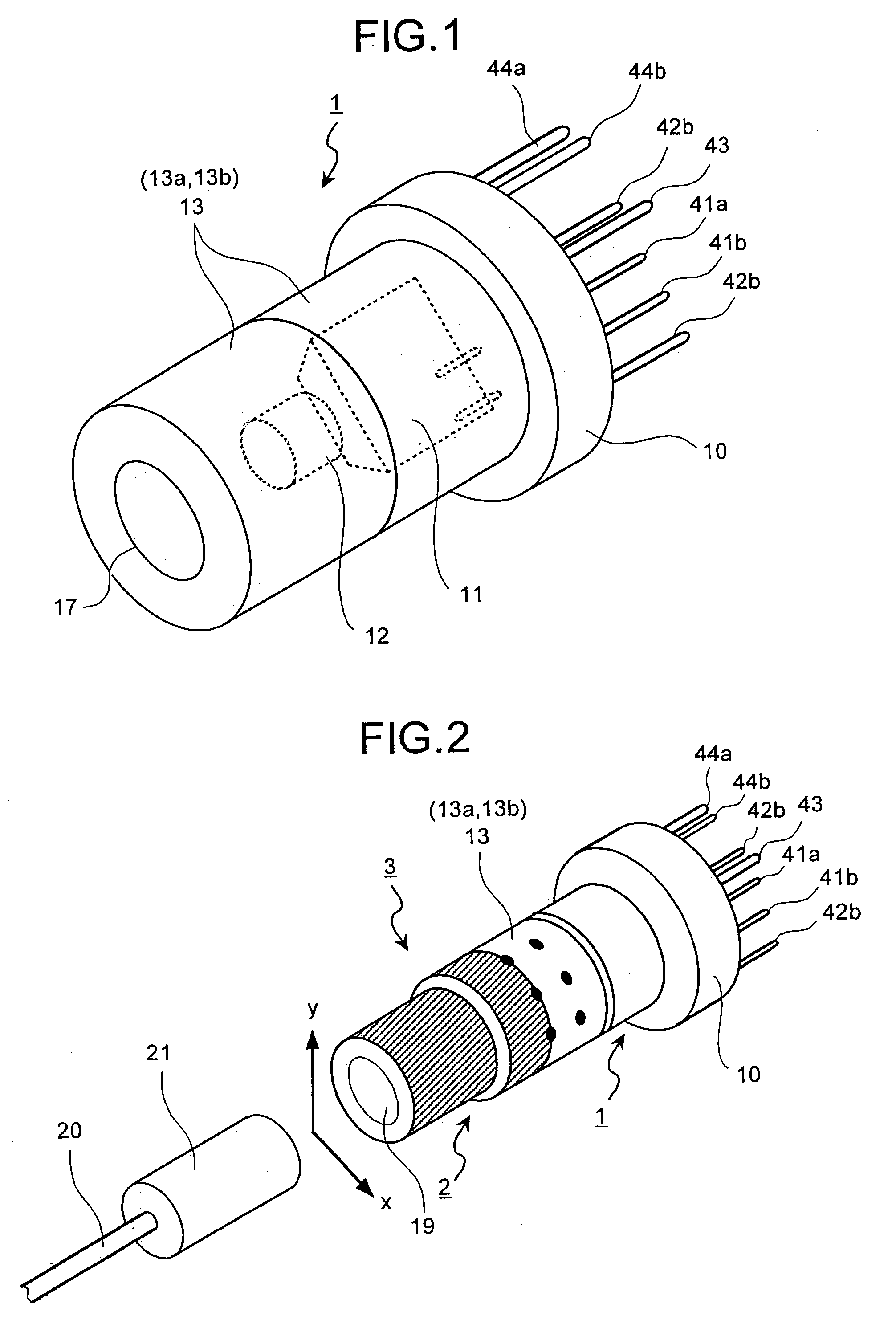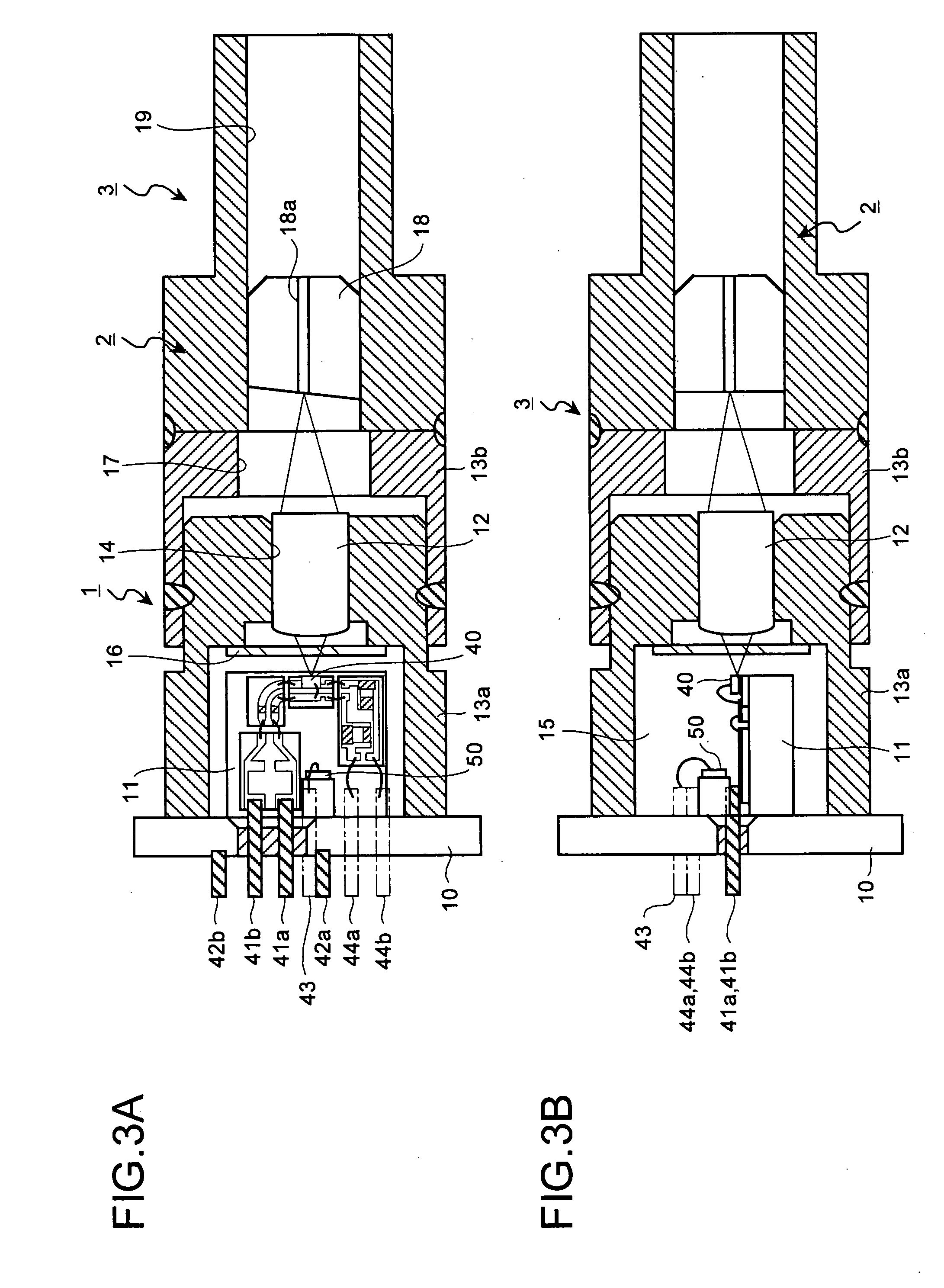Optical semiconductor package
a technology of optical semiconductors and semiconductor lasers, applied in the direction of semiconductor lasers, instruments, optical elements, etc., can solve the problems of high frequency transmission characteristics of packages, signal quality degradation, and high cost of ceramic substrates per unit area
- Summary
- Abstract
- Description
- Claims
- Application Information
AI Technical Summary
Benefits of technology
Problems solved by technology
Method used
Image
Examples
first embodiment
[0051] The optical semiconductor package employed in an optical semiconductor module in the first embodiment of the present invention will be explained with reference to FIG. 1 to FIG. 17. The optical semiconductor package in the first embodiment adopts an inexpensive can package type module form, and includes therein a laser diode (hereinafter, “LD”) serving as an optical semiconductor element. In this specification, it is assumed that the optical semiconductor package is a generic term embracing even a package without a sealing cap.
[0052]FIG. 1 is an outer perspective view of the optical semiconductor package (hereinafter, “can package”) 1. FIG. 2 is an outer perspective of the optical semiconductor element module 3 (hereinafter, “LD module” since an example of packaging an LD in the package will be mainly explained in this embodiment) including the can package 1 and a receptacle 2. FIG. 3A is a horizontal sectional view (a view in a direction parallel to an x axis shown in FIG. ...
second embodiment
[0144] The second embodiment of the present invention will be explained with reference to FIGS. 19A to 19C. FIG. 19A to FIG. 19B illustrate the other shapes of the dielectric 77 for sealing the high frequency signal pins 41a and 41b.
[0145] In FIG. 19A, the cocoon shape in which two circles are connected to each other by a straight line (or a gentle curve) is adopted as the shape of the dielectric. If attention is paid to distances from one pin 41a (or 41b) to peripheral edges of the dielectric 77, that is, to the stem 10 serving as a ground member, then distances of a part around about 270 degrees at the center of the pin 41a (or 41b) are equal, i.e., r, and the distances of the remaining parts from the pin 41a (or 41b) are larger than the distance r. If the dielectric is oval as employed in the first embodiment, then distances of a part around about 180 degrees at the center of the pin 41a (or 41b) are equal, i.e., r, and the distances of the remaining parts from the pin 41a (or 4...
third embodiment
[0147] The third embodiment of the present invention will be explained with reference to FIG. 20. In the third embodiment, the stem 10 is constituted to have a multi-structure so as to reduce the cost of the stem 10.
[0148] In the stem 10 in the third embodiment shown in FIG. 20, the high frequency signal pins 41a and 41b are arranged substantially in the central portion of the stem 10, and the oval dielectric 77 consisting of soda-barium glass is arranged around the high frequency signal pins 41a and 41b each consisting of Kovar. A first stem member 10a substantially equal in coefficient of thermal expansion to the dielectric 77 and consisting of Kovar is arranged so as to prevent cracks from occurring to the dielectric 77. A second stem member 10b consisting of an inexpensive material, such as iron, having a relatively good thermal conduction is arranged outside of the first stem member 10a. By arranging the members 10a and 10b, the radiation characteristics are improved. As a mat...
PUM
 Login to View More
Login to View More Abstract
Description
Claims
Application Information
 Login to View More
Login to View More - R&D
- Intellectual Property
- Life Sciences
- Materials
- Tech Scout
- Unparalleled Data Quality
- Higher Quality Content
- 60% Fewer Hallucinations
Browse by: Latest US Patents, China's latest patents, Technical Efficacy Thesaurus, Application Domain, Technology Topic, Popular Technical Reports.
© 2025 PatSnap. All rights reserved.Legal|Privacy policy|Modern Slavery Act Transparency Statement|Sitemap|About US| Contact US: help@patsnap.com



